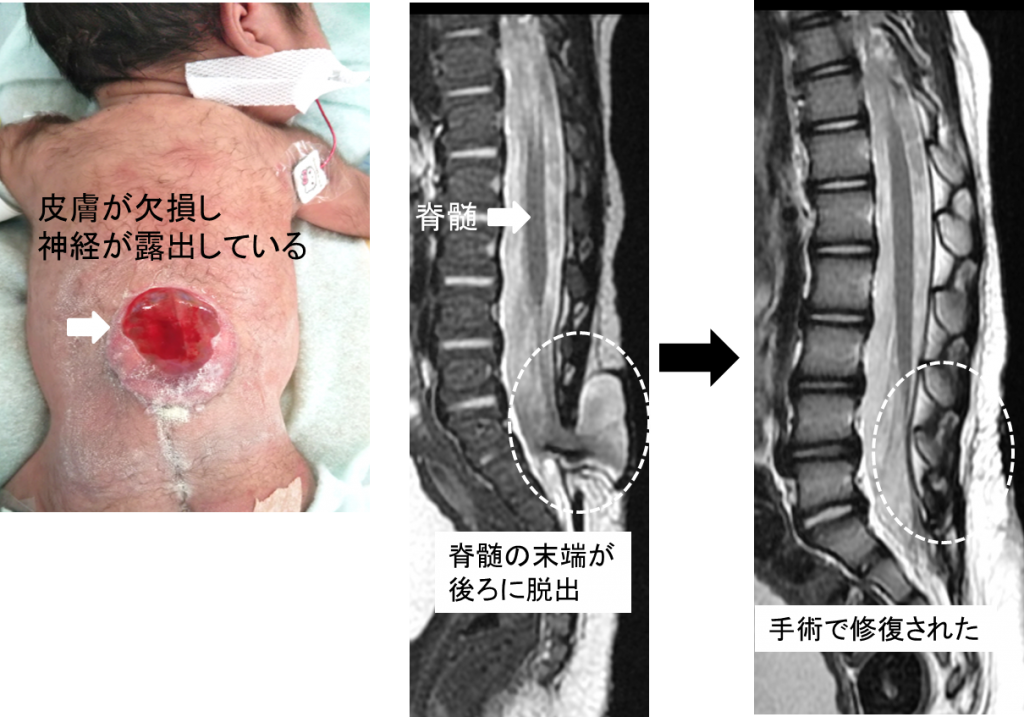Clinical Information
Brain and nerve diseases in children
Some of your child’s brain diseases are known soon after birth (congenital), while others are discovered when they grow up. In order to fulfill our mission as a university hospital, our surgeons are led by board-certified pediatric neurosurgeons. We also work closely with doctors from other departments, including pediatrics, to treat patients. The following is a list of typical brain and neurological diseases that we treat in children.
Congenital Hydrocephalus
Water (cerebrospinal fluid) flows through the brain. In congenital hydrocephalus, the cerebrospinal fluid does not circulate properly from birth and accumulates excessively, putting pressure on the brain and causing developmental disorders. Hydrocephalus can occur for a variety of reasons, but it can also be detected during a prenatal checkup (ultrasound) when the baby is still in the mother’s body. A shunt operation is performed to allow the stored cerebrospinal fluid to flow into the abdomen through a thin tube.

X-rays of a child who has had shunt surgery
Spinal Menigocele
This is a disease in which the nerves (spinal cord) that run through the spine are not formed properly from birth. It is diagnosed at birth because it is particularly common in the spinal cord of the lumbar region and is associated with skin abnormalities (defects). In severe cases, as shown in the picture, surgery is required immediately after birth. In our hospital, we perform the surgery together with plastic surgery to repair the skin as nicely as possible. Unfortunately, even if the surgery is successful, there will still be nerve damage, which means that the child will not be able to move his or her legs or excrete urine or stool properly and will require special training. Congenital hydrocephalus is also likely to be a complication and will require the treatment described above.

(Right) Back of a child with a spinal meningeal aneurysm.
(Left) MRI of the lumbar region of a child with a spinal meningeal aneurysm.
Chiari’s malformation
The disease is caused by a morphological abnormality of the cerebellum, the posterior part of the head. Part of the cerebellum becomes depressed downward (called drooping). About half of the patients may have a spinal cord abnormality (syringomyelia). This causes complaints of headaches and numbness in the hands. It can also be associated with scoliosis (bending of the spine), and scoliosis may be noted during a school checkup, which may lead to the discovery of Chiari malformation. Partial removal of the occipital bone widens the volume of the occiput, relieving the drooping of the cerebellum and reducing symptoms.

X-rays of complications of scoliosis

MRI images of the neck of a child with Chiari malformation
